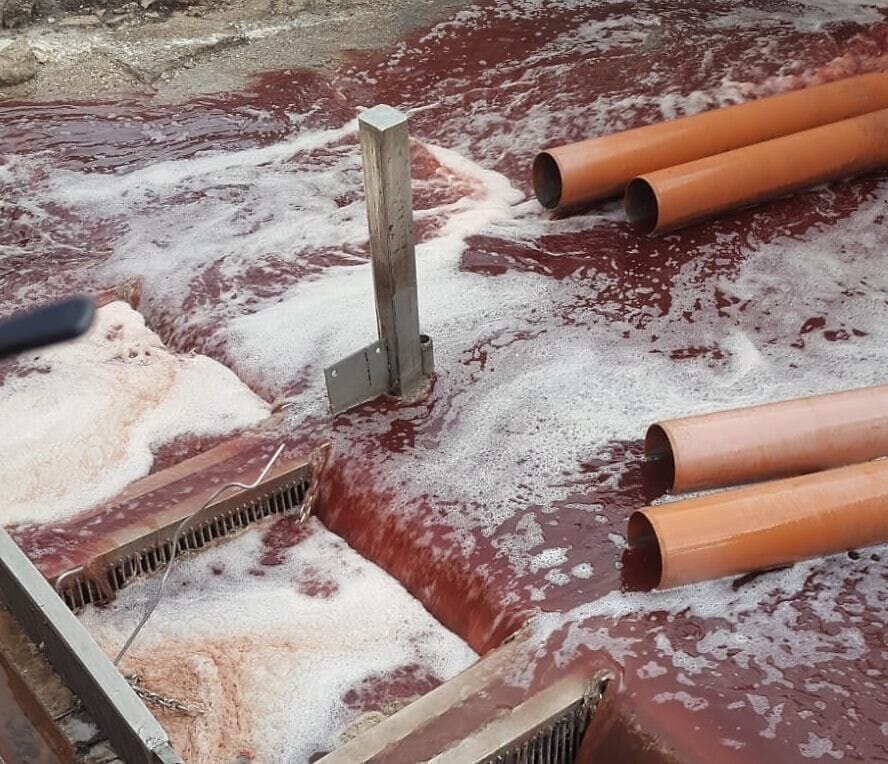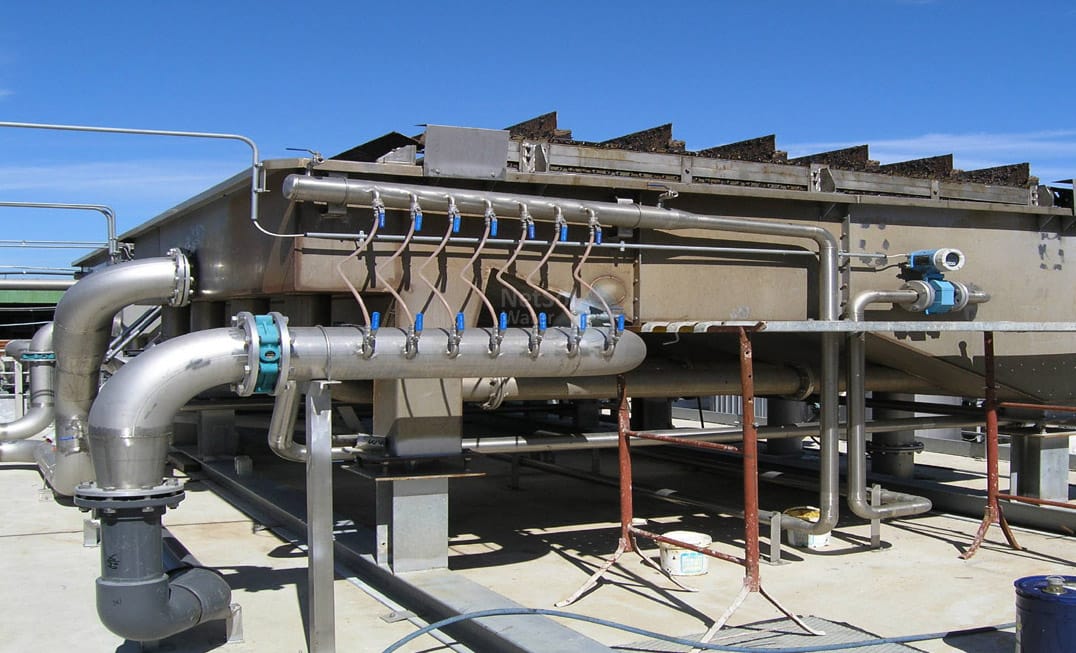Effluent Management Strategies for Slaughterhouses: A Comprehensive Guide to Wastewater Treatment
Slaughterhouses are one of the largest contributors to industrial wastewater. The nature of the waste generated during the slaughtering and meat processing operations contains high levels of organic matter, blood, fat, and suspended solids, all of which make effluent management a complex challenge. Ensuring that slaughterhouse wastewater is treated before being discharged is not only crucial for regulatory compliance but also essential for protecting the environment and human health.
In this blog, we will explore various effluent management strategies for slaughterhouses with a specific focus on wastewater treatment processes, the types of treatments, and the importance of sustainability in effluent management.

The Nature of Slaughterhouse Wastewater
Slaughterhouse effluent is rich in organic and inorganic substances, including:
- Blood: High in nitrogen and phosphorus, blood is one of the main contributors to the organic load in slaughterhouse wastewater.
- Fats, oils, and grease (FOG): These components can clog pipes and create significant challenges for wastewater treatment plants.
- Animal tissues and bones: Large particles that must be removed early in the treatment process.
- Suspended solids and colloidal substances: These can affect the clarity of the water and contribute to biological oxygen demand (BOD).
- Pathogens and bacteria: Wastewater from slaughterhouses can contain harmful bacteria, making disinfection a critical step in treatment.
Key Challenges in Slaughterhouse Wastewater Management
The effluent from slaughterhouses is highly variable depending on factors such as the type of animal processed, water usage, and the specific practices employed in meat processing. Key challenges include:
- High Organic Load: The high BOD and chemical oxygen demand (COD) levels mean the water has a significant amount of organic material, which consumes oxygen during degradation and can harm aquatic ecosystems.
- Fats and Grease: If not properly managed, fats and grease can create blockages in both sewer systems and treatment plants.
- Nutrient Concentration: Nutrients like nitrogen and phosphorus, often present in high levels, can contribute to eutrophication if wastewater is discharged untreated.
- Solid Waste: Animal tissue, bones, and other solid materials must be screened and removed early in the treatment process to avoid clogging and mechanical damage to treatment systems.

Wastewater Treatment Types for Slaughterhouses
Slaughterhouses require a combination of primary, secondary, and tertiary treatments to ensure effective management of their effluent. Each stage of the treatment process addresses different types of waste, from large solids to dissolved organics and pathogens.
Primary Treatment: Mechanical Processes
The primary treatment of slaughterhouse wastewater focuses on the removal of large solids and fats, preparing the effluent for further treatment stages.
Screening: Coarse screens are used to remove larger solids like animal tissues and bones from the wastewater. Fine screens may also be used to capture smaller particles.
Fat Traps and Grease Separators: Fats, oils, and grease are removed using gravity separation techniques, such as Dissolved Air Flotation (DAF). In this process, tiny air bubbles attach to the FOG particles, allowing them to float to the surface, where they can be skimmed off.
Sedimentation Tanks: Heavier particles settle to the bottom of sedimentation tanks, while lighter particles and water move on to the next treatment stage.
Secondary Treatment: Biological Processes
Once the majority of the large solids, fats, and oils are removed, the next stage focuses on the removal of organic matter using biological treatment methods.
Aerobic Treatment: In an activated sludge system, wastewater is pumped into an aeration tank where bacteria digest organic matter in the presence of oxygen. This process reduces BOD and COD levels. Air is supplied continuously to maintain the bacteria’s metabolism.
Anaerobic Treatment: Anaerobic digesters are used to treat slaughterhouse effluent with high organic loads. In this oxygen-free environment, anaerobic bacteria break down organic waste into biogas (methane) and carbon dioxide, which can be captured and utilized as a renewable energy source.
Trickling Filters: Wastewater is spread over a bed of media (such as stones or plastic) covered with a biofilm of microorganisms that degrade organic matter as the water trickles down.
Tertiary Treatment: Advanced Processes
After the secondary biological treatment, tertiary processes are employed to further polish the effluent, removing any remaining nutrients, pathogens, or fine solids before discharge.
Disinfection: Disinfection is critical for killing pathogenic microorganisms that may still be present in the water. Chlorination, ozonation, or UV radiation are commonly used methods.
Nutrient Removal: To prevent nutrient pollution, denitrification and phosphorus removal processes are employed. Denitrification typically involves the use of bacteria that convert nitrates into nitrogen gas, while phosphorus can be precipitated out of the water using chemical agents like alum or ferric chloride.
Filtration: Advanced filtration systems, such as sand filters or membrane filtration, are used to remove any remaining fine suspended solids from the treated water.

Sludge Management
One of the by-products of wastewater treatment is sludge, which must be carefully managed. Sludge from biological treatment systems (aerobic or anaerobic) is typically thickened, dewatered, and either sent to landfill or used for composting. In some cases, sludge from anaerobic digesters can be used for energy production.
Sustainable Practices in Slaughterhouse Wastewater Management
Given the environmental impact of slaughterhouse wastewater, implementing sustainable practices is essential for reducing both water consumption and the overall ecological footprint of meat processing plants.
Water Recycling and Reuse: Recycling treated wastewater within the slaughterhouse for cleaning, cooling, or other non-potable purposes can significantly reduce freshwater consumption.
Energy Recovery: By utilizing anaerobic digestion, slaughterhouses can capture biogas for energy use, which reduces the need for fossil fuels and contributes to renewable energy production.
Nutrient Recovery: The nutrients recovered during wastewater treatment, particularly nitrogen and phosphorus, can be reused as fertilizers, closing the loop on nutrient cycles.
Zero-Liquid Discharge (ZLD): Some facilities aim for ZLD systems, where all wastewater is treated and either reused or evaporated, leaving no liquid discharge. While costly, this approach eliminates the environmental risks associated with effluent discharge.
Regulatory Compliance and Sustainable Operations
Slaughterhouses are subject to strict regulatory oversight due to the high organic content and potential pathogens in their wastewater. Compliance with both local and international regulations, such as the Environmental Protection Agency (EPA) in the U.S. or similar authorities worldwide, is crucial for avoiding penalties and ensuring sustainable operations.
By integrating sustainable practices into wastewater management, slaughterhouses can not only meet these regulatory standards but also achieve greater resource efficiency, reduce their environmental impact, and improve their corporate image through corporate social responsibility (CSR) initiatives.
Conclusion
Efficient effluent management is critical for slaughterhouses due to the high levels of organic waste and nutrients in their wastewater. By implementing a combination of primary, secondary, and tertiary treatment methods, and by adopting sustainable practices like water recycling and energy recovery, slaughterhouses can significantly reduce their environmental impact. Moreover, by adhering to regulatory standards and focusing on sustainability, these facilities can enhance their operational efficiency and contribute to a more eco-friendly meat processing industry.